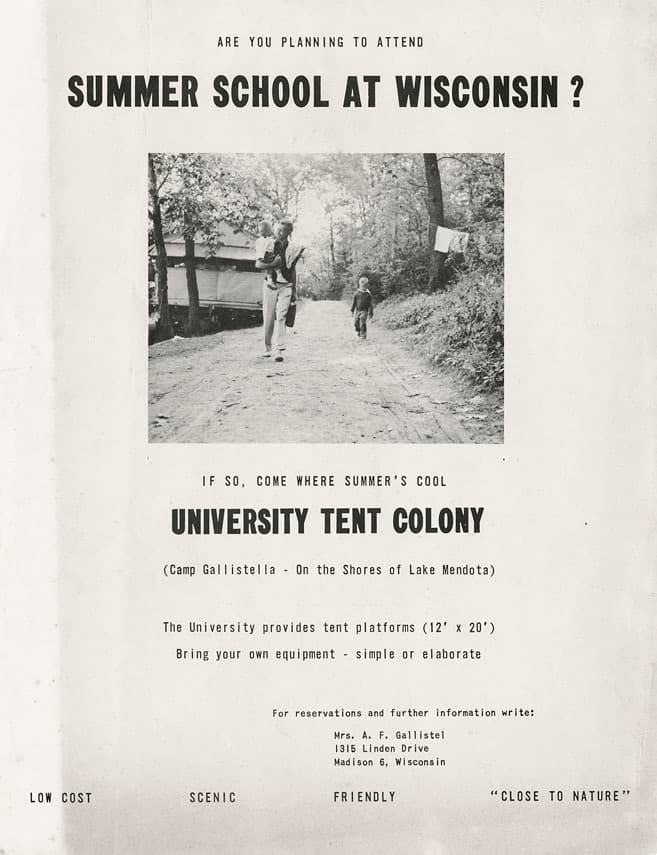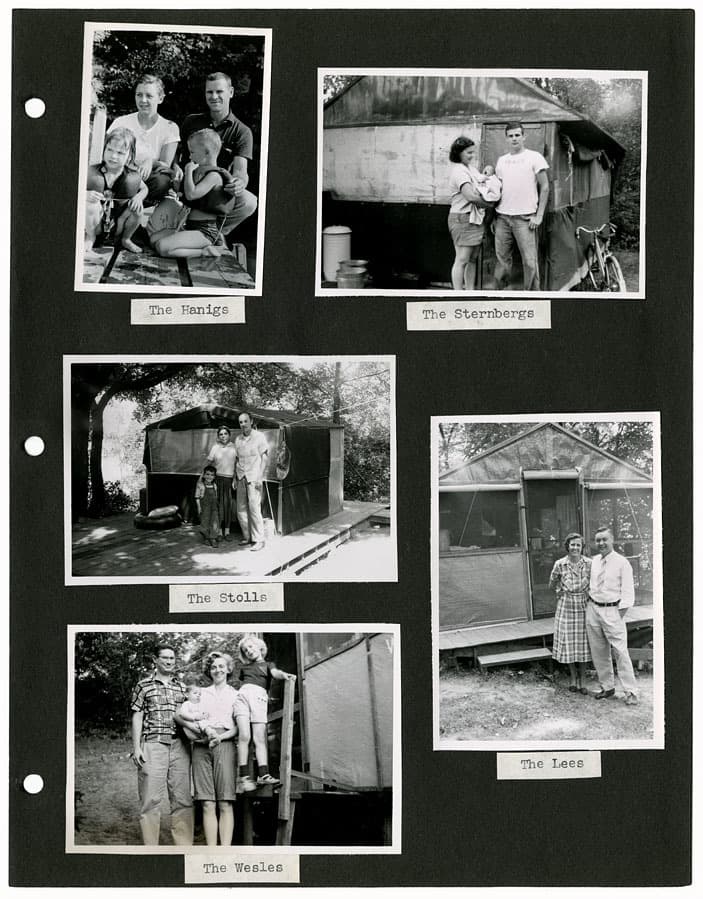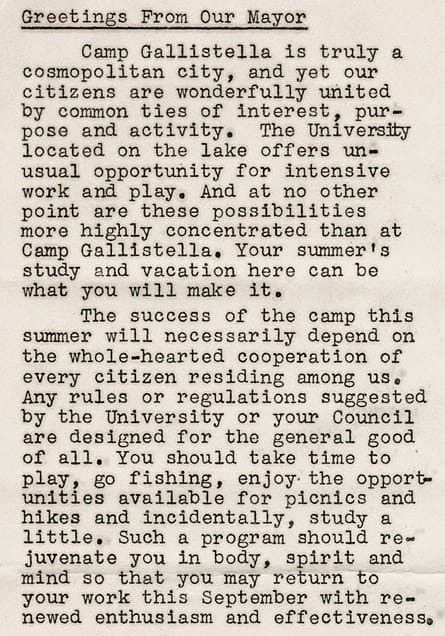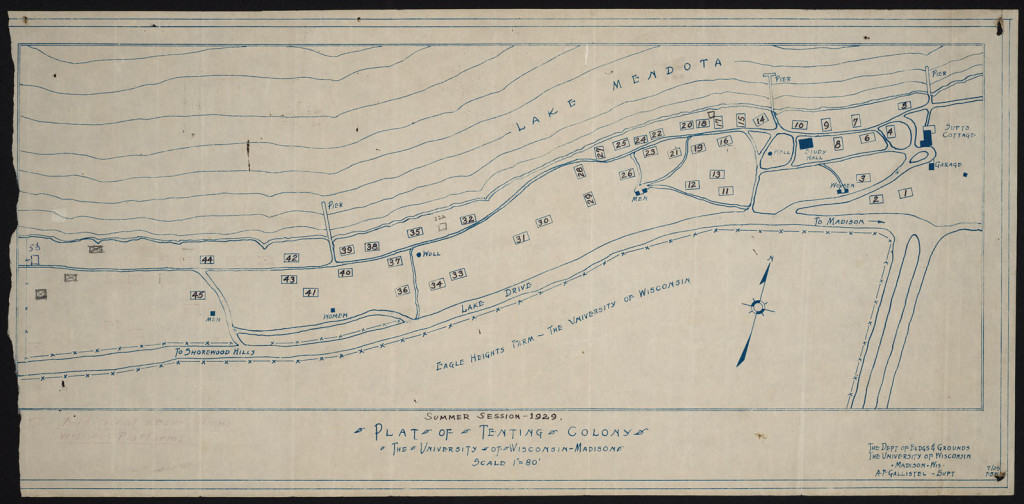From 1912 to 1962, the University of Wisconsin-Madison offered an unusual housing opportunity for graduate students and their families spending the summer session in Madison: camping in tents on the Lake Mendota shoreline. The tent colony, called Camp Gallistella, appeared every summer along the lake in the area now known as Eagle Heights. This unique aspect of campus history is captured in a new digital collection from the UW-Madison Archives and the University of Wisconsin Digital Collections. Collection materials include photographs, maps, and issues of the annual camp newsletter, Gallistella Breezes.
Most of the graduate students who spent summers at Camp Gallistella were married men with young families. The many children living in the tent colony stayed busy with all kinds of outdoor activities including swimming, boating, fishing, and picnics. Although conditions at Camp Gallistella were rustic, camp life was carefully planned and organized. Each summer the families elected a mayor, clerk, constable, sanitary commissioner, postmaster, newspaper editor, and several aldermen. From 1919-1959, Albert Gallistel, Campus Superintendent of the Department of Buildings and Grounds, and his wife Eleanor served as the colony’s on-site supervisors, helping to establish a sense of camaraderie within this temporary community — and lending their name to the camp itself.








You must be logged in to post a comment.